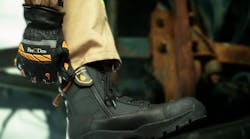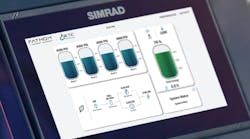Accountability is rapidly becoming an important part of every incident. More and more, people are realizing the usefulness and importance of accountability on the scene. I am talking about having TRUE accountability of ALL personnel at the incident, not just those operating in the "hot zone".
Accountability is not only the responsibility of the Incident Commander, but also every member of the agency. Yes, it is the responsibility of those in charge to set the policies and to see that these policies are implemented. But it is up to each and every one of us to ensure that these policies are followed every time.
It is not very difficult to convince a Chief that he should be using accountability. It is a different story to convince every member of the department of this. It should be as simple as the leadership to saying, "This is the way we are going to do it," and then put it into the SOG which should be the end of it. Unfortunately we all know that is not the case. All too often I hear the excuse that we are just volunteers. My answer to that is yes, you are a volunteer. You volunteered to walk through the door to join. If you want to be a member of this organization, you must abide by the rules and procedures set forth by this organization. End of story.
In my experience with accountability I have seen it do many things for the agencies I have worked with. First of all, everything is done in teams. When you are put on a team you are part of that team for the entire incident. No more freelancing! It is a proven fact that freelancing kills firefighters.
If one member of the team needs air, the whole team goes for air not just that person. I feel that this is a common sense issue. We tell our children at a very young age that they are not to go swimming without a partner so why in the world would we even think about entering one of the most dangerous environments we as human beings could produce, alone?
A team can consist of as little as two members and we suggest that it not exceed six because of the span of control issue. In my experience I believe that teams of two or three work the best. If you need a larger team, it is a lot easier to combine two smaller teams than to make a larger one because once you are part of a team, you should not split that team, unless command determines the need.
There are situations when teams will be split, i.e. if a member must leave the scene or if someone gets hurt. This must be done through command and accountability. If you make a team of six, you now have a team of six for the entire incident. If you combine two teams of three, once you complete your assignment you still have two three-man teams.
These teams are made up to suit the job that they will be performing, not to forget that the team members must be qualified to do the job. In the ABBET-RIT organization, we have adopted a set of "qualification stickers" that are placed in a predetermined location on the helmet to assist in this. These stickers are issued by the chief only after the firefighter receives the proper training and proves at in-house training that they can do the job.
Unfortunately we all know that in some instances we can attend a class, sit in the back row and sleep. And when you leave you get a certificate for attendance. This in no way qualifies you to do the job. That is why we recommend that you prove that you can do the job. You would not want to put your biggest person on the roof of a burning structure to do ventilation, nor do you want all inexperienced people on the same team. A little discretion should be used when assembling teams.
Every team needs someone in charge of them. The "team leader "is responsible for keeping the team together. That means, if a team member starts to go off on their own, the team leader needs to get them back immediately to maintain team integrity. Also the team leader is to ensure that the team's assignment is carried out per command's instructions, as well as reporting any change of location.
It is also the team leader's responsibility to collect the team members' accountability tags to give them to the Accountability Officer (AO) who will give the team leader a team number tag with the team's assigned number on it. Now the accountability officer knows who is on that team.
We also recommend that the accountability tag contain the member's name, department, and some basic medical information such as medications, allergies and emergency contact. How many EMT's wish they had this basic information for every patient? If something should happen, this tag is given to the medical personnel to assist them.
These tags are exchanged at command where the IC and AO will be. While the team leader is getting his team tag from the AO and receiving information on the team's assignment, the rest of the team is getting the tools they will need to complete the assignment. For example, if the team will be on attack, they will get hand tools and the hose ready, or if they will be ventilating, the team will be getting a ladder, saw, pike pole, etc.
We have all taken classes and trained in-house to do this. We should not be standing around. Things should be ready to go when the team leader gets there.
We use a two-tag system. The second tag or team tag also goes to the team leader who will clip them to the numbered tag given to him by the AO, and clip them on himself. Now he has a record of his team members and his team number. The AO can now call Personnel Accountability Report (PAR) at timed intervals with the team leader. For example, "Team one, do you have PAR?". The team leader will now do a visual head count on his team, and report back whether he has PAR. We are now accounting for groups of individuals through the use of teams.
PAR checks should be performed in 15 - 30 min intervals, depending on the situation. Pump operators, and fire police are part of every PAR survey. They report via radio and are added to the board. How many of us check on these people? When would we find out that something has happened to them? They will be part of every PAR check now.
The team leader will report any change of location, be it moving to another floor, the air station, or rehab, etc. The tags stay with accountability and the teams stay together until the scene is cleared. I also keep track of types of air packs of the team members. When working with mutual aid, you could have different packs on the same team.
Keep your information current. Things move rapidly on a fire scene. A good Accountability Officer will keep up with this. There are times when I call PAR, that I will also ask location just to verify that my information is correct. Now if something happens, like a collapse, I can tell command what team was there, who was on that team, what type of air packs they are wearing and approximately how much air they have left. This is a wealth of information to give a rescue team. Also, I can provide the medical crew with basic medical information.
The idea of working in teams is not only to make true accountability possible, but also help us take care of each other.
Working in teams works for us. There are many other areas that I will touch on in the coming months. Stay tuned????..
Tino A. Yaccich has been in the fire service for 10 years and is the Accountability Officer for the Rochester Township VFD, Pa. He is a member of the Beaver County Haz-Mat Team and the ABBET-RIT organization, and a certified Instructor 1. He has assisted several agencies in the Beaver County, Pa area in organizing an accountability system and is the co-author of the ABBET RIT Accountability system, which has recently been accepted into the curriculum of the Pennsylvania State Fire Academy. He can be reached at [email protected]





